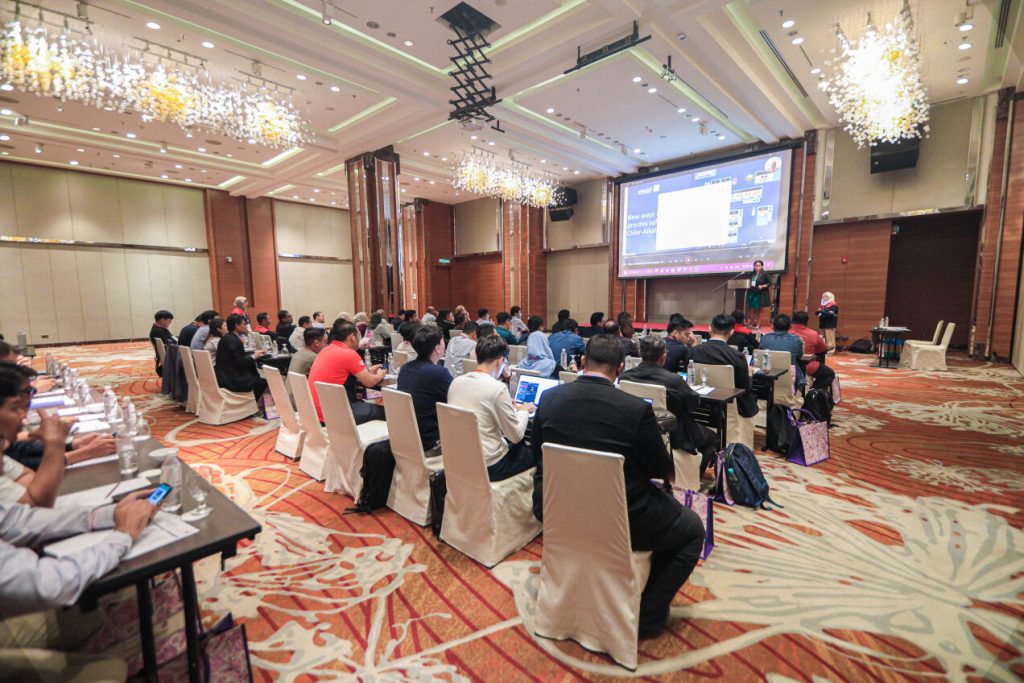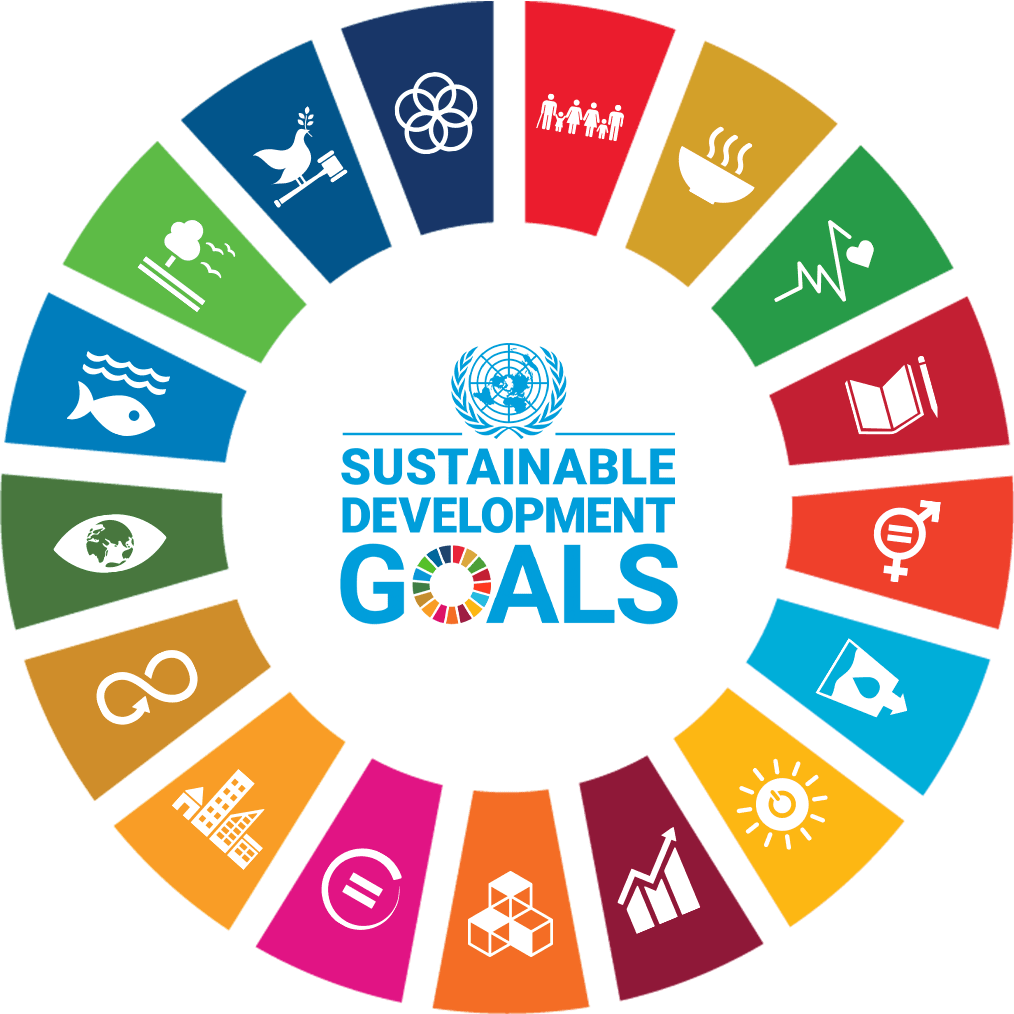Receive Email Updates
We are thrilled to report that the Global Safety Seminar, organized by the World Chlorine Council (WCC) in collaboration with the Chemical Company of Malaysia (CCM), was an outstanding success! Held in the picturesque city of Johor Bahru, Malaysia, from 13-14 June 2023, this event brought together industry experts, professionals, and organizations from around the world to enhance safety practices in the chlorine production industry.
The highlight of the seminar was the exclusive facility tour at a nearby CCM production site. Attendees had the opportunity to witness cutting-edge practices firsthand as they were guided through the operational processes and safety measures involved in chlorine production. In addition to the enriching knowledge exchange, the Global Safety Seminar fostered exceptional networking opportunities. Professionals from numerous countries gathered to share their experiences, challenges, and successes in the field of chlorine production safety. The event created a platform for collaboration, allowing participants to build valuable connections and broaden their perspectives.

We were honored to welcome representatives from Malaysia, India, Thailand, Australia, New Zealand, Singapore, Republic of Korea, United States, Pakistan, and The Netherlands. The diverse representation truly exemplified the collective commitment towards safety in the chlorine production industry.
Moreover, we were delighted to have an official from Malaysia’s Department of Safety and Hazard (DOSH), also known as the Department of Occupational Safety and Health (DOSH), present at the seminar. Their presence reinforced the importance of collaboration between regulatory bodies and industry stakeholders to ensure the highest safety standards are met.
The success of this seminar would not have been possible without the dedication and hard work of our Global Safety Team Leader, Robyn Brooks, and the entire organizing committee. Their tireless efforts ensured a seamless experience for all participants, enabling them to focus on gaining knowledge, building connections, and advancing safety practices.
We extend our gratitude to all the attendees, presenters, and sponsors for their contributions to the Global Safety Seminar. Your enthusiasm and commitment to safety have undoubtedly left a lasting impact on the chlorine production industry.
As the WCC, we remain steadfast in our commitment to driving safety excellence. We believe that by sharing knowledge, fostering collaboration, and advocating best practices, we can create a safer future for the entire chlorine production sector.
In an effort to underscore its commitment to achieving sustainable development goals, the World Chlorine Council (WCC) made a significant impact at the United Nations Water Conference held at the end of March. Focusing on global water challenges, the WCC emphasized the responsible use of chlorine in water treatment processes to support sustainable development goals.
The United Nations Water Conference serves as a crucial platform for experts, policymakers, and stakeholders from around the world to collaborate and develop effective strategies for water preservation and accessibility. The conference facilitates the exchange of knowledge, best practices, and technologies related to water management.
With its prominent role in the chlorine industry, the WCC participated in the conference to emphasize the pivotal role of chlorine in maintaining clean and safe water supplies. The council highlighted the significance of chlorine-based disinfection techniques in preventing waterborne diseases and improving public health, aligning with the United Nations Sustainable Development Goals (SDGs).

During the conference, the WCC unveiled a series of resources aimed at promoting sustainable water practices while addressing the SDGs and how they are specifically related to chlorine chemistry.
The WCC’s active participation in the United Nations Water Conference received widespread appreciation, with attendees commending the council’s efforts to prioritize sustainability and align with the SDGs. The conference facilitated valuable knowledge exchange and identified potential collaborations between the WCC and other organizations dedicated to water conservation and sustainable development.
As global concerns over water scarcity and pollution continue to escalate, the WCC’s dedication to sustainable water practices and chlorine’s crucial role in ensuring safe water supplies positions the organization as a key contributor to the global water agenda and the SDGs. The council’s initiatives showcased at the conference demonstrate a proactive step towards addressing pressing water challenges and working towards a more sustainable future in line with the SDGs.

Are you passionate about safety in the chlorine production industry? Do you want to enhance your knowledge and share experiences with industry experts from around the world? Look no further! The World Chlorine Council (WCC), in collaboration with the Chemical Company of Malaysia (CCM), is thrilled to invite you to the highly anticipated Global Safety Team Seminar, taking place in beautiful Johor Bahru, Malaysia.
Scheduled for June 13, 2023, this in-person seminar promises to be an information-packed event, featuring engaging discussions and presentations on crucial safety topics. Gain insights into accidental mixing, process safety, employee engagement and training, and lessons learned from incidents. Join us as we strive to create a safer future for the chlorine production sector.
One of the highlights of this seminar is an exclusive facility tour at a nearby CCM production site. Experience firsthand the cutting-edge practices implemented by CCM, as experts guide you through the operational processes and safety measures involved in chlorine production. Witness the industry’s best practices and engage directly with professionals who are shaping the future of safety.
The event kicks off on Tuesday, June 13, with the Global Safety Team Seminar running from 8:30 a.m. to 5:00 p.m. Immerse yourself in a day of valuable discussions led by esteemed industry leaders, providing you with practical insights and strategies to enhance safety within your organization. Following the seminar, a reception will be held from 6:30 p.m. to 8:30 p.m., offering a perfect networking opportunity to connect with like-minded professionals.
On Wednesday, June 14, don’t miss the chance to embark on an eye-opening facility tour starting at 7:30 a.m. Witness firsthand the operational excellence demonstrated by CCM, and gain a comprehensive understanding of the safety measures employed in the production of chlorine. This immersive experience will inspire you to raise the bar for safety practices within your own organization.
To ensure a seamless experience for all participants, the seminar fee is set at $100 USD, which includes refreshments and some meals. We encourage early registration to secure your spot, as the fee will increase to $100 USD plus an additional $20 USD for registrations made after June 2, 2023. Don’t miss out on this opportunity to connect with industry professionals and expand your knowledge in a picturesque setting.
If you require an invitation letter for visa purposes, simply reach out to our Global Safety Team Leader, Robyn Brooks, who will provide you with all the necessary information and instructions. We are here to support you every step of the way to ensure your attendance at this event is hassle-free.
Registration for this unparalleled event closes on June 8, 2023. Secure your spot now and be a part of the World Chlorine Council’s commitment to driving safety excellence in the global chlorine production industry.
Join us in Johor Bahru, Malaysia, for the Global Safety Team Seminar. Together, let’s create a safer future for the chlorine production sector!

The SDGs are a global agenda adopted during the UNs Summit on Sustainable Development in September 2015 and play an important role in the establishment and strengthening of the culture of environmental and social sustainability in governments, companies, and society. Consisting of 17 goals, many of which can be positively impacted by chlorine chemistry.
Chlorine and its derivatives are the world’s main public health agents, being major allies in the treatment process of water abstraction and sewage for their ability to eliminate pathogens, ensuring proper disinfection and quality of water for consumption and for the correct disposal in nature, as determined by SDG 6 – Drinking Water and Sanitation, which is designed to ensure the availability and sustainable management of water and sanitation for all, which are fundamental for improving hygiene conditions and reducing diseases.
The main sectoral entity in Brazil, the Brazilian Association of the Alkali, Chlorine, and Derivatives Industry (Abiclor), formalized this commitment in 2021 by signing the Letter of Intent regarding the SDG Program – with the State of São Paulo’s Environmental Company. The sector has been working to establish objectives in relation to reducing the environmental impacts resulting from the production processes and services provided by the member companies. The chlor-alkali chain is committed to ensuring production and consumption patterns that help with the decarbonization of the economy and in the fight against global warming.

The 2021-2022 Chlor-alkali Industry Review has just been launched at https://chlorineindustryreview.com in time for Euro Chlor’s Annual General Assembly in 2022. This year the publication focuses on how Euro Chlor is transitioning towards climate neutrality and full circularity. Its first introduction piece outlines the key highlights for the strategy, events, publications and introduction of new Key Performance Indicators (KPIs). The second introduction piece gives more details on Euro Chlor’s strategic priorities.
The Industry Review, first produced more than 27 years ago, covers the most important industry information from the past year with key stories, updates and figures. It also covers the latest highlights from the four Mid-Century Strategy priorities of Safety Leader, Competitive Supplier, Climate Neutral Player and Circularity Champion. As in previous years, a print version of the review is also available and can be downloaded as a PDF from https://chlorineindustryreview.com/.
October 11 marks the 10th anniversary of the International Day of the Girl Child. This United Nations (UN) milestone recognizes the rights of girls and the unique challenges they face around the world. Among these challenges is the responsibility that many girls have to collect household water for their families. In fact, girls and women are the water carriers in 80 percent of water-deprived households, according to the UN. The time and energy required to procure water, often by walking substantial distances carrying heavy loads, and in some cases risking assault, can have a devastating effect on a girl’s education, and therefore, her future.

Sustainable Development Goal (SDG) #6 of the UN 2030 Agenda aspires to provide safely managed drinking water and sanitation for all people by 2030. The 2022 Report on the UN SDGs indicates two billion people lacked safely managed drinking water in 2020; by 2030, this number is estimated to fall to 1.6 billion. While representing progress, that is, unfortunately, far short of the SDG #6 timeline for universal access. Life without safely managed drinking water is fraught with the risk of waterborne disease. Safely managed drinking water, including treatment with chlorine-based disinfectants, is a major contributor to good public health.
An interesting feature of the SDGs is their interconnectivity: Progress made toward achieving one goal often has a positive effect on the achievement of one or more of the others. For example, in making headway toward universal safely managed drinking water (SDG #6), SDG #3 (good health and well-being) and SDG #8 (decent work and economic growth) are advanced. As the world progresses toward SDG #6, the heavy burden of water procurement will be lifted from the shoulders of girls in developing nations, helping to further gender equality (SDG #5) through equal access to education. It will be a significant step forward for girls in their rightful quest to reach their fullest human potential.
One hundred and fourteen years ago this September 26, an American city became the first in the nation to provide chlorinated drinking water to consumers on a continuous basis. Conceived by Dr. John L. Leal, a physician and advisor to the Jersey City Water Supply Company, chlorination of city water was a bold science-based experiment in public health.
At the turn of the last century, public health was poor in large cities such as Jersey City. Waterborne illness, especially typhoid fever, was rampant. High rates of waterborne illnesses exacted a terrible toll in human life and suffering. In a dramatic court proceeding, the Jersey City water company was given 90 days to propose a method to purify its drinking water. The water had been shown to be microbiologically unhealthful. Dr. Leal worked rapidly with other experts to develop a system to add chlorine to the water supply as it exited the city’s reservoir and flowed to consumer taps. The first chlorinated water arrived in homes, schools, and businesses on September 26, 1908.
As the typhoid fever rate in Jersey City plummeted, public health became the clear winner. Given the glowing example provided by Dr. Leal and his colleagues, drinking water chlorination spread like wildfire across the US and to many areas globally. The results of the new technology were astounding: a 2005 study concluded clean water was responsible for large declines in deaths in major US cities during the late 19th and early 20th centuries. The authors report, “A striking finding is that clean water technologies appear to have reduced typhoid fever by 26% initially and by another 65% after five years, leading to its near-eradication by 1936.” Continuous drinking water chlorination of US municipal water has been a resounding public health success!

This World Water Week (23 August – 1 September), the World Chlorine Council joins the global community in highlighting the great value of safe drinking water to every human being on Earth. The theme of this year’s milestone “Seeing the unseen: The value of water,” may serve as an eye-opener to those who have given little thought to that life-giving liquid that flows freely and inexpensively from their household taps. In contrast, many residents of developing countries find it necessary to devote several hours per week to procuring water for their families from central collection areas. Access to water that is free of waterborne pathogens, thanks to treatment with chlorine-based disinfectants, for example, is life-changing. It contributes to the good health of families and helps remove obstacles to their education and gainful employment.
Sustainable Development Goal #6 of the United Nation’s (UN’s) 2030 Agenda includes the target of providing universal access to safely managed drinking water[1]. According to the 2022 Sustainable Development Goals Report, the proportion of the global population using safely managed drinking water in 2020 was 74%. By 2030, the aspirational deadline for the 17 Goals, the UN estimates this figure will rise to 81%. That’s not 100%, and more work needs to be done. The World Chlorine Council recognizes international aid organizations, such as Water Mission, Children’s Nutrition Program of Haiti, and Water Engineers for the Americas and Africa, that continue to deliver the gift of clean water to communities in need. The volunteers who work selflessly on behalf of these organizations are doing the important work of opening eyes to the life-transforming value of safe, disinfected drinking water.
[1] “Safely managed” drinking water services are defined as “drinking water from an improved water source which is located on premises, available when needed and free of faecal and priority contamination,” according to the World Health Organization.
Last month the World Health Organization (WHO) declared the current monkeypox outbreak a public health emergency of international concern. As of 5 August 2022, the US Centers for Disease Control and Prevention (CDC) noted 28,220 cases of monkeypox have been reported worldwide in the current outbreak. While our knowledge of this outbreak continues to develop, scientists tell us that monkeypox is not as easily spread as COVID-19. According to WHO, the “monkeypox virus is transmitted from one person to another by close contact with lesions, body fluids, respiratory droplets and contaminated materials such as bedding.” Unlike its deadlier relative, smallpox, monkeypox commonly presents as a mild disease, although it too has the potential to cause severe illness. Symptoms can include fever, swollen lymph nodes, and a painful or itchy rash with what appear to be pimples or blisters.
The monkeypox virus can survive in linens, clothing and on environmental surfaces, according to CDC. Fabrics should be contained until laundered, and if possible, people with monkeypox should handle and launder their own soiled laundry. Laundering can be done in a standard washing machine with detergent; laundry sanitizers are not necessary, according to CDC. In contrast, the CDC recommends disinfecting all areas where a person with monkeypox has spent time, including all items potentially contaminated by that person, such as “tables, countertops, door handles, toilet flush handles, light switches, and floors.” Among other disinfectants, the virus can be substantially inactivated on contaminated surfaces by a chlorine bleach solution prepared by adding 100 milliliters of approximately 6% (by weight) liquid bleach to 1 liter of water. The solution should remain on the surface for one full minute.[1] As with all disinfection procedures, environmental surfaces should be cleaned with detergent and water before they are disinfected.
In early 2020, we described how a diluted bleach solution could be used to destroy SARS-CoV-2 on surfaces. As the world community now contends with monkeypox, it is good to know that common household bleach can be used to help reduce the spread of yet another virus of global concern.
[1] These directions produce a bleach solution of 0.63 weight percent, which falls within the range of the data provided by Kampf (2022; see abstract).
The World Health Organization (WHO) designates each July 28 “World Hepatitis Day.” The purpose of this observance is to raise awareness of the various forms of hepatitis, a disease that affects the human liver. Globally, a person dies from a hepatitis-related illness every 30 seconds, according to the WHO. The 2022 theme of World Hepatitis Day is “I Can’t Wait,” highlighting the importance of testing and treatment for this disease. The theme is also meant to amplify “the voices of people affected by viral hepatitis calling for immediate action and the end of stigma and discrimination.”
This year the World Chlorine Council is marking World Hepatitis Day by promoting a free, downloadable poster (in metric and Imperial or U.S. customary units) to help stem the spread of one common form of hepatitis, hepatitis A. People become exposed to the virus via the fecal-to-oral route, including by ingesting contaminated food or water. The virus can spread rapidly, especially under crowded and unsanitary living conditions. The poster provides simple, “pictogram” directions for mixing an appropriate amount of chlorine bleach and water to make a solution that can be applied to contaminated surfaces, such as toilets and countertops, to destroy the virus. Along with available vaccines and good sanitary practices, such as frequent handwashing, surface disinfection with chlorine bleach is an effective means of combating the spread of hepatitis A.